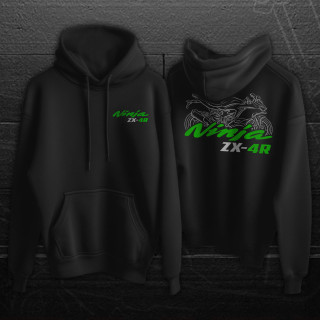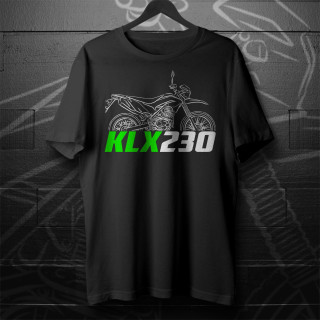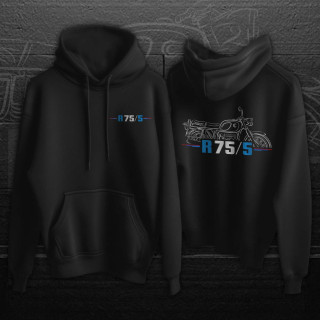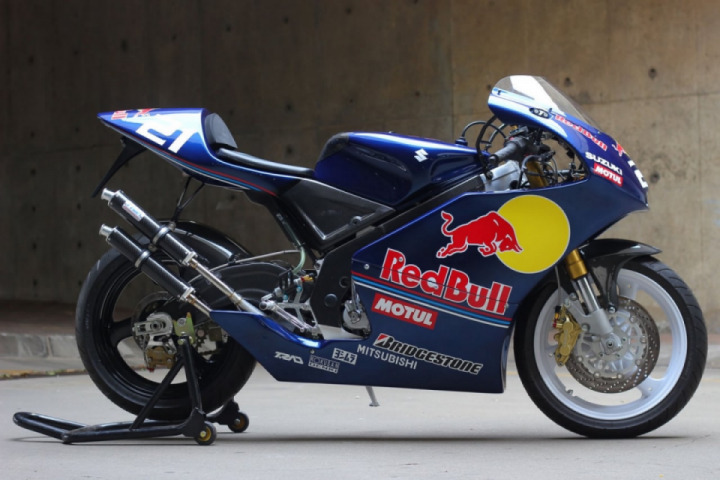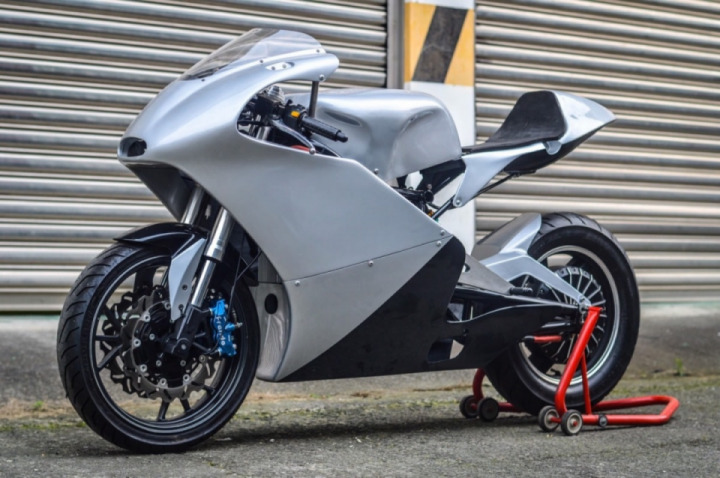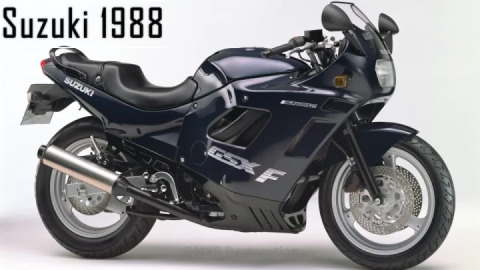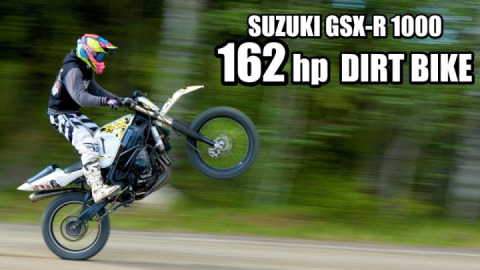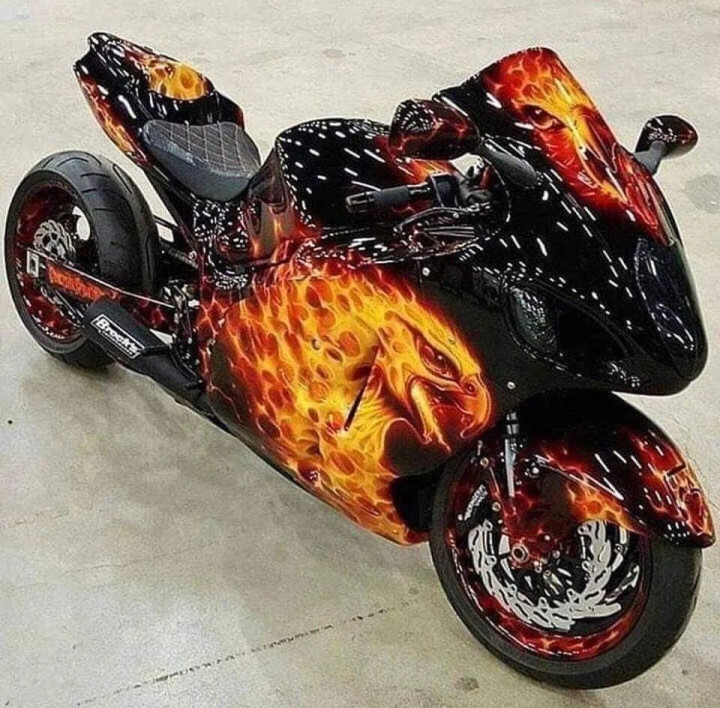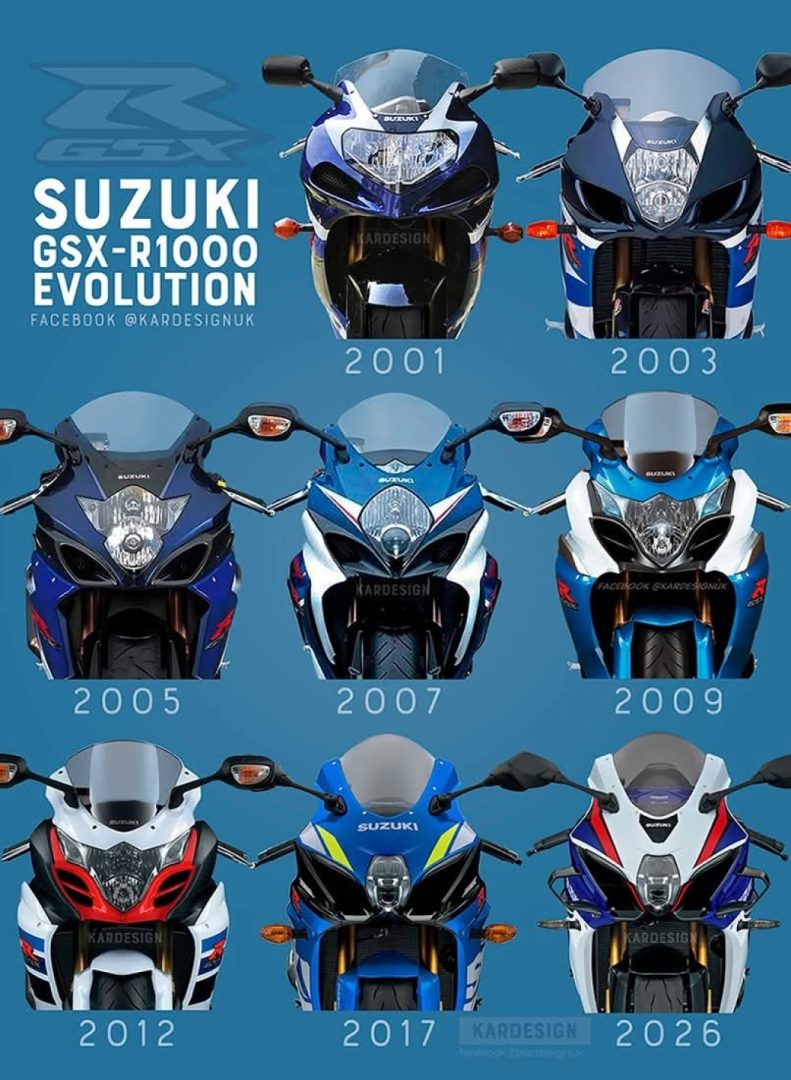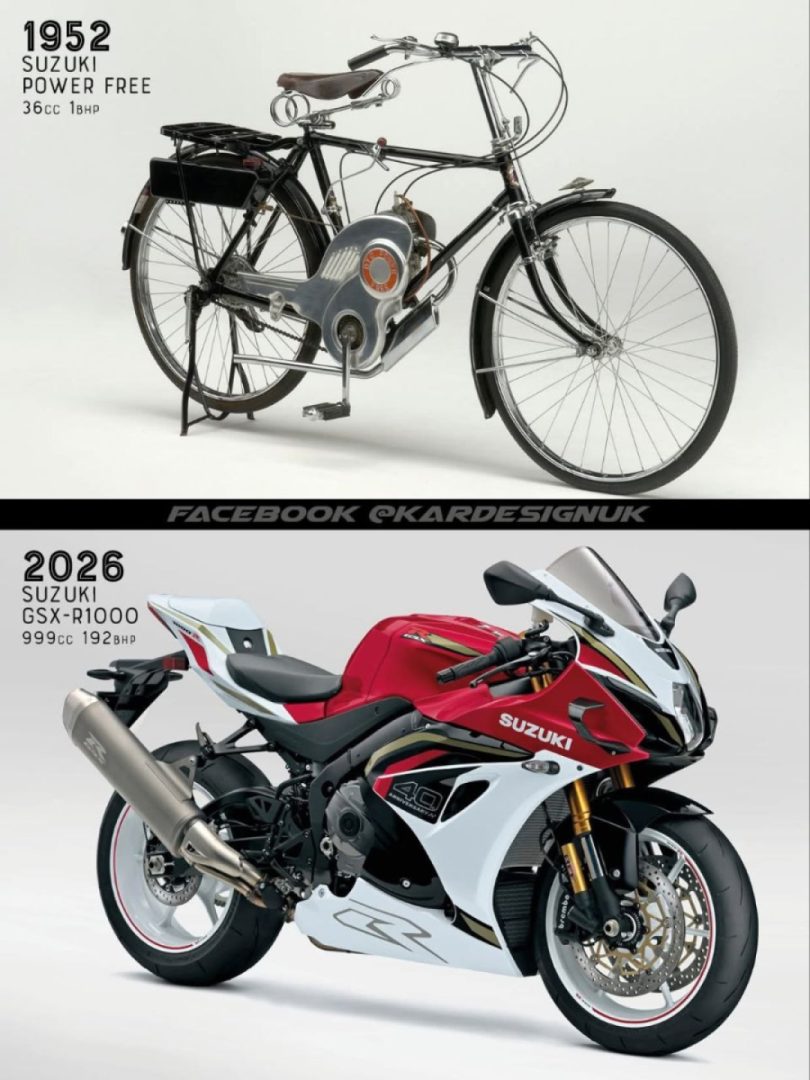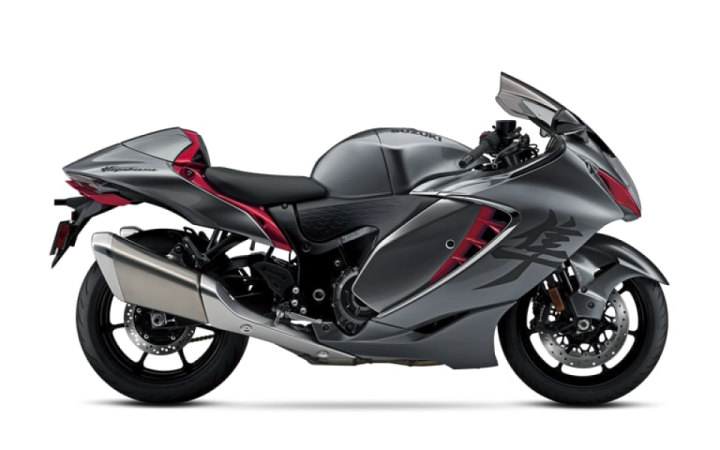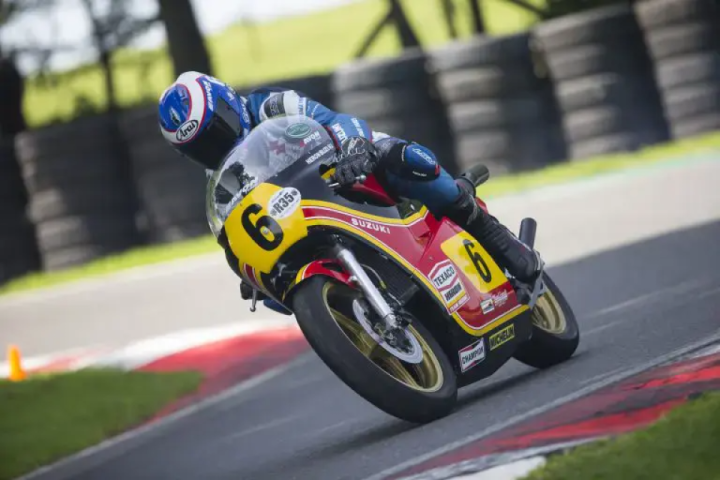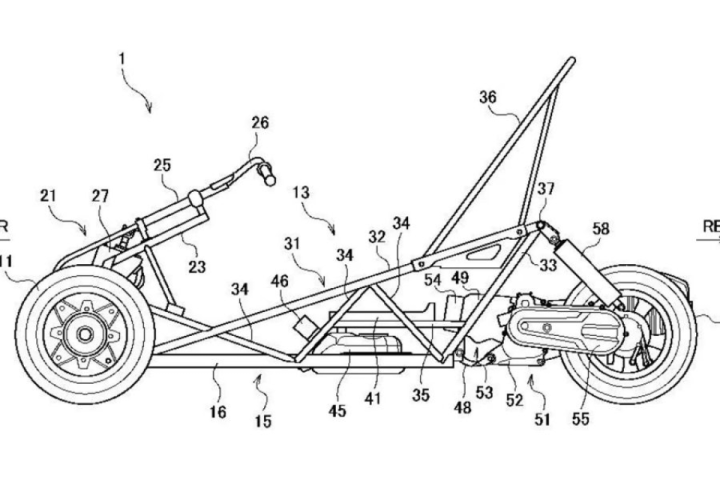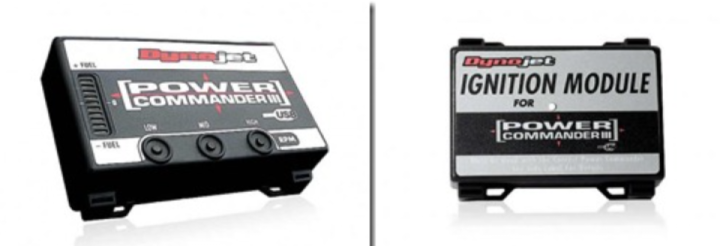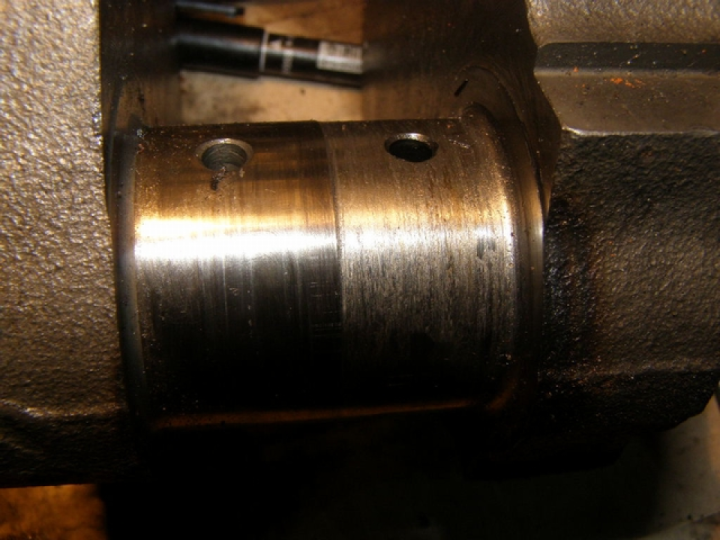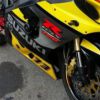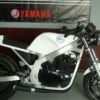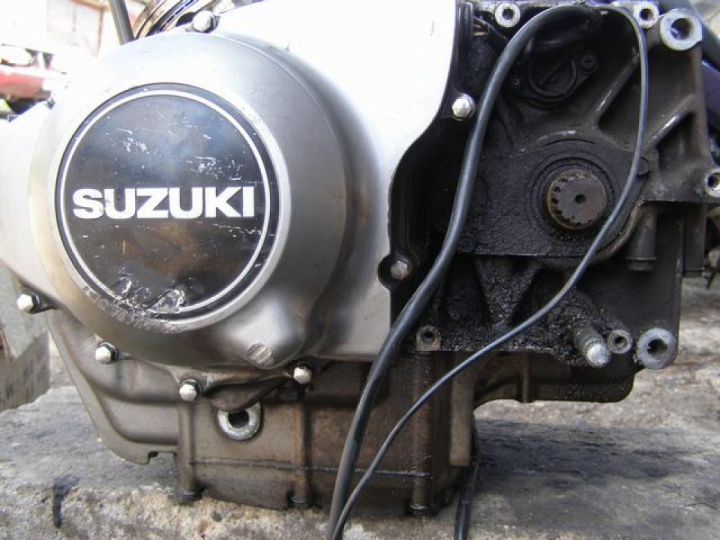
Suzuki RGV250 VJ22 “PlayBoy”
If this bike looks vaguely familiar, then maybe you have seen the TYGA Playboy MC21 NSR300 that TYGA built a couple of years back.
Then all the text and photos courtesy of TYGA-Performance
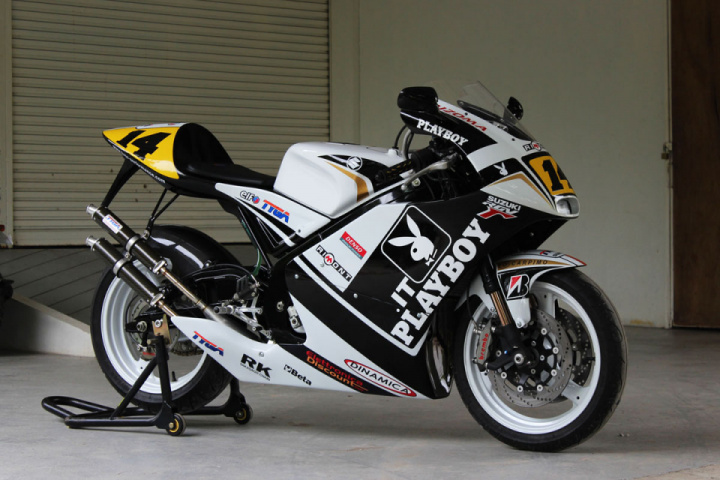
Introduction
If this bike looks vaguely familiar, then maybe you have seen the TYGA Playboy MC21 NSR300 that we built a couple of years back and which also features on our list of project bikes. It is no secret that we here at TYGA Performance have a special relationship with NSRs but with an ever increasing range of products for and customers who own the VJ22 it makes perfect sense to build an RGV250 project bike which we built for a special and very patient customer. The build was pretty involved but after many months of hard work, it has paid off. In terms of performance, this Suzuki is superbly accomplished and it looks pretty tidy too! Honda or Suzuki, RGV or NSR, decisions decisions!
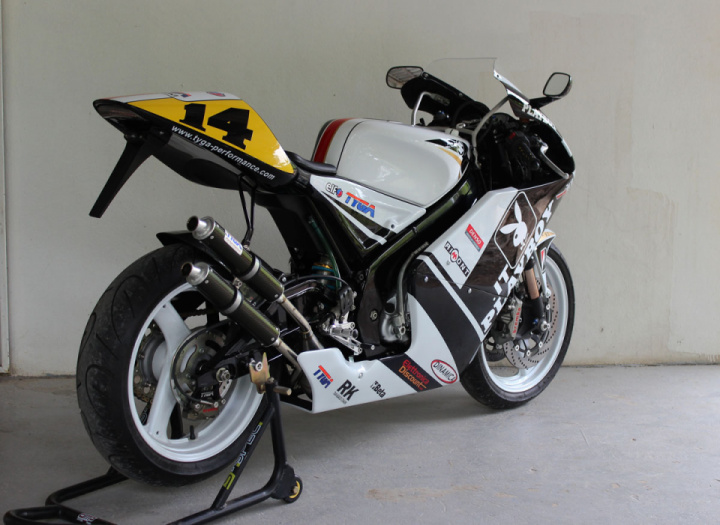
What was done:
The list of what went into this bike is a long one. The owner supplied us with an almost stock VJ22 which had the all important Thai registration book from when it was first imported in to Thailand in the 1990s. It arrived disassembled with some restoration having already been done on what was otherwise a pretty tired looking bike. He also gave us a big box of goodies to help us get started with the build. These included a Nitron rear shock, custom radiator, EBC brakes, Samco water hoses, various fasteners and some replated hardware. Oh yes, I should also mention the frame and swing arm had already been powder coated black too. The engine had previously been sent off to the UK for rebuilding and a 300 big bore kit installed and would arrive later during the build. A Zeeltronic ECU was also supplied.
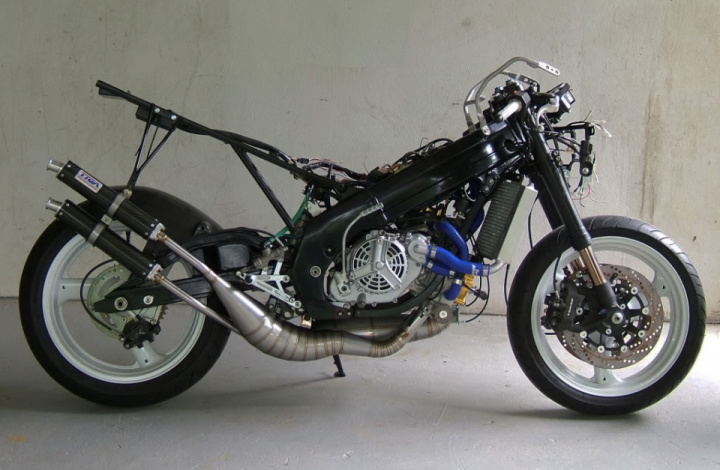
As well as a long list of TYGA Performance products which can be found at the end of this page, there were other components which were sourced along the course of the build and some custom parts which we made specifically for this project. So now for the details; where to start?
Chassis:
The frame and swingarm are standard, but we needed something a little special at the sharp end. We had a handful of front ends in the shed, so we opted for the GSX-R750 USD/Radial Brake option. These won’t fit the standard RGV lower triple clamp, so we knocked up a one off lower clamp with a three bolt pinch. Plenty of strength there that’s for sure.
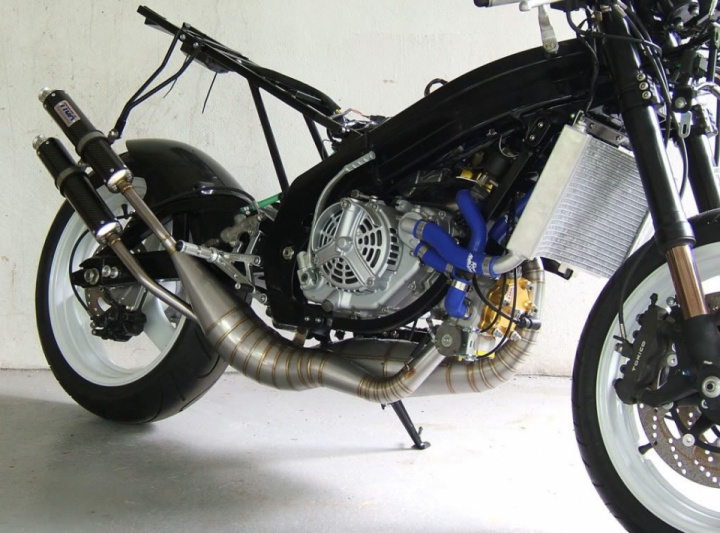
The front Brembo brakes chosen for the job were the P4 34mm Radial Monobloc. Maybe the CNC billet, or the nickel plated would have been nice but budget restraints and all that!
The basic dimensions of GSX-R and RGV forks are quite different, so we needed to make some special spacers and what have you to fit the wheel and the speedo drive. This lead to another issue. The pitch of the brake rotors was too narrow for the Brembo calipers, so we made some spacers to widen them. Which then lead to the issue of the Brembo/GSX-R fork combo being for a larger diameter disc than what we were given for the build. No problem, stick the forks in the mill and machine the caliper mounts down to size. Job done.
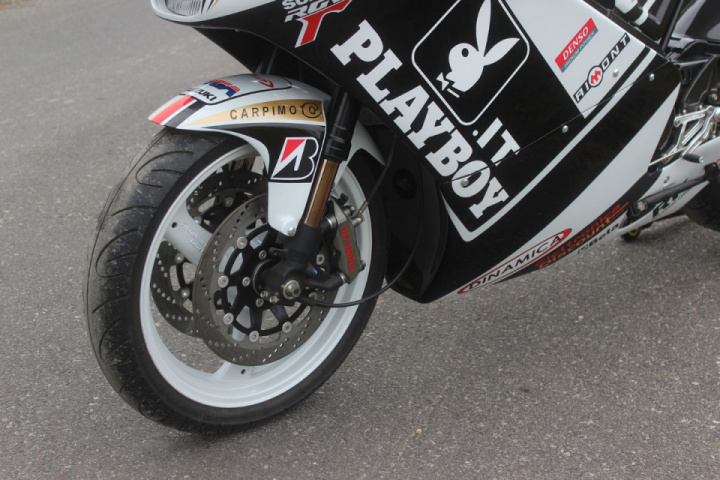
The EBC rotors up front came in a rather gourdy colour combination. We weren’t having that, so stripped off the anodising and re-plated them black.
To top it off we stuck with the GSX-R master cylinder, giving great feel and incredible stopping power.
TYGA handle bars keep things under control.
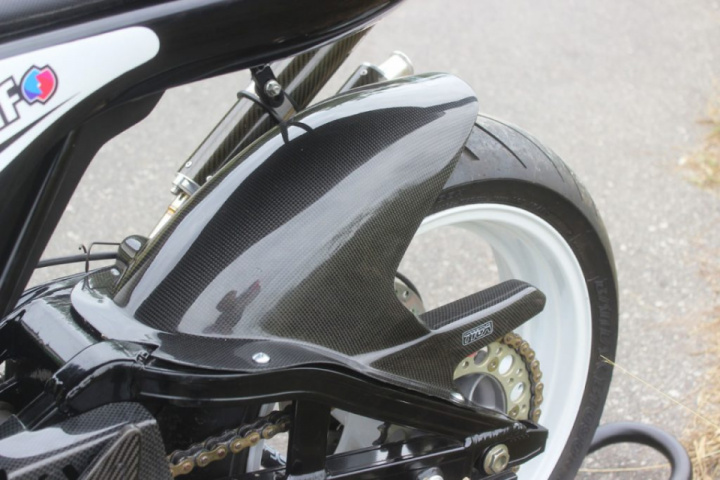
At the rear end, we fitted a Nitron shock and some CNC chain adjusters. The adjusters given to us for the build were again a bit loud (red and blue), so we re-anodised a set black to be consistent with the general scheme.
A CNC billet Brembo (P2 34mm), fitted to our under slung caliper holder provides the stopping power at the rear end, grabbing an EBC rotor. Said rotor was (in my opinion) a bit chunky, so we threw it in the CNC machine and lightened it a touch.
Custom HEL lines are fitted fore and aft.

Obviously you need somewhere to keep your feet off the road, so the obligatory TYGA step kit was fitted.
Engine/carbs/wiring/ignition etc:
The dry clutch, SP motor was supplied as an RGV300, ready built by Stan Stephens. We reckon that they’d been thinking very high octane fuel when they built it, not the pump gas that the customer had specified. No problem, a quick call to our friends at VHM and a set of RGV300 specific heads, with pump fuel inserts were on the way.
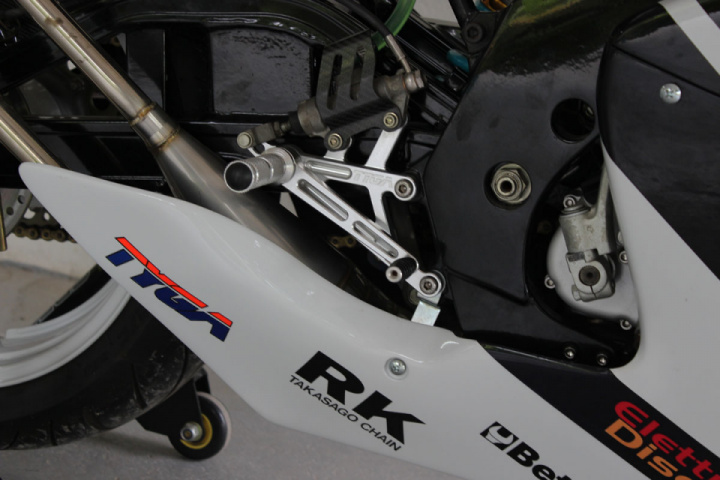
Gases leave the engine via TYGA GP pipes and carbon silencers. This bike was actually used as the original jig for the latest spec pipes back when we first built it up into a rolling chassis.
In the box of supplied parts were a set of exhaust valve covers with goo outlets. But we obviously over looked those and took the opportunity to fit our TYGA exhaust valve covers.
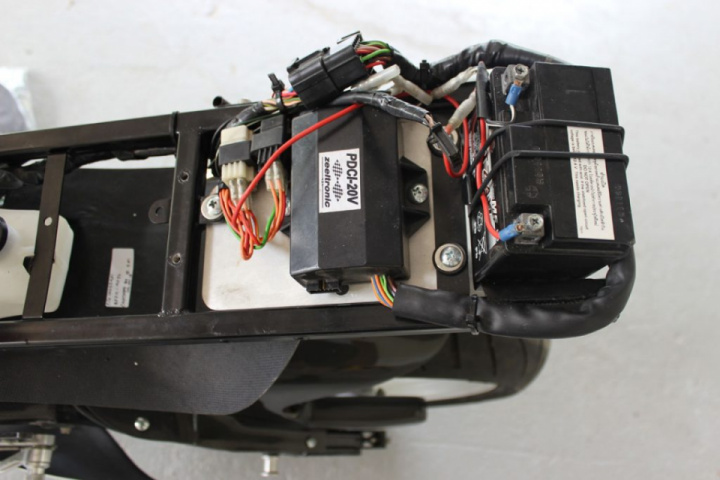
Not much else was done by us with the engine, other than a check over and fitting some high strength clutch springs.
The carbs are now a mixture of three sets of carb we had around. These are fed by the standard airbox.
The standard (old and crispy) wire harness was junked in favour of a new (aftermarket) harness which had been put together with the Zeeltronic ignition unit in mind. We had to fit the odd connector here and there, and wire in the Zeeltronic unit connectors, but apart from that, the fit and finish was very good. There were even a couple of extra wires for things like quick shifter and shift light, should we want to use them. Very thoughtful.
Bodywork/Paint:
Bodywork is the now familiar TYGA GP Style kit, specifically designed for the VJ22 in mind. Apart from some relieving around the radiator, the other modifications to the bike did not cause any issues with fitment of the bodywork. The kit uses its own subframe and the two stroke oil container supplied with the seat cowling kit was installed because as a street bike, the decision was made to keep the autolube system.
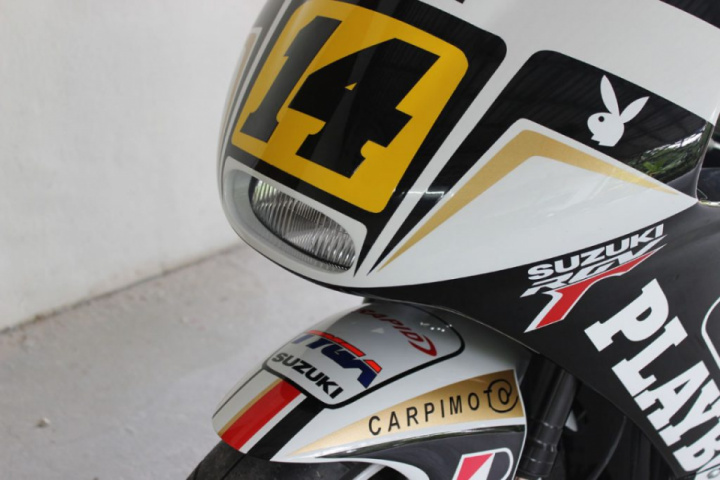
A few special brackets were required to allow the stock RGV front fender to be mounted to the GSX-R front end. We think the RGV fender suits the GP look better.
The paintwork is an adaptation of the Randy de Puniet Moto GP scheme and we were given a comprehensive graphics kit to get us going. However, being generic, some of the decals needing resizing, the number 14s in particular required the best part of a morning to totally redesign to fit the confines and angle of the seat cowling. Left and right and front all being completely different added to the fun! Paintwork was carried out in-house by Tyga and the lines work well with the slim shape of the RGV. In some ways, better than the chunkier RC212V.
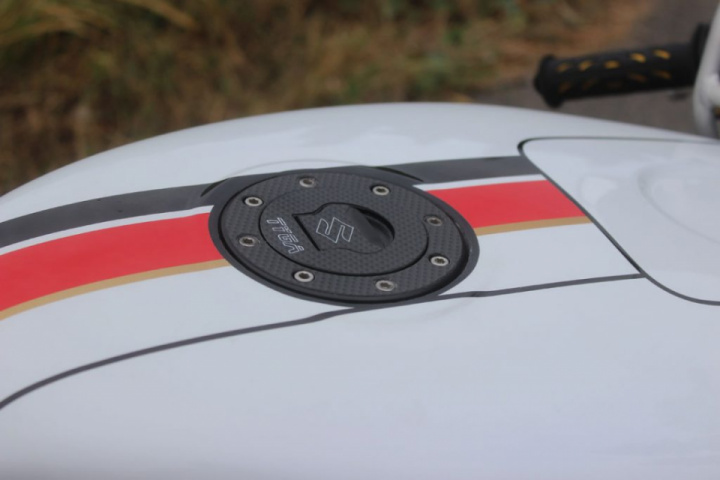
Being a street bike, the fairing is installed with a headlight in the air duct and the seat cowling has a slip LED taillight discretely placed on the underside. The kit is supplied with a registration plate holder and NSR250 mirrors which may just be enough to persuade the cops that this is a street legal bike.
To give it the finishing touches, the bike has a few carbon parts such as the rear hugger and chain guard as well as other details such as the carbon filler cap cover.

The riding experience:
In the words of Matt again: ‘To be honest, setting up an RGV300 engine is not as straight forward as it should be. The carbs are, in my opinion, a bit of a pain compared to say the Keihins on an NSR. But we got there eventually. This was helped immensely by the Zeeltronic unit, which after reservations at first (I’m an Ignitech guy), I promptly fell in love with. The handheld controller is brilliant, and fits neatly in my pocket for test rides. Stopping on the side of the road adjusting things made a few people stop and stare. The one thing I really got to grips with was the duty cycle solenoids. Why these are not fitted to the NSR250 instead of the ON/OFF air solenoids is beyond me. And with the Zeeltronic’s ability to control them, fine tuning the air/fuel was incredibly easy and accurate. Many thanks to Suzuki for using these, and also to Borut at Zeeltronic for giving us the option of playing with them.”
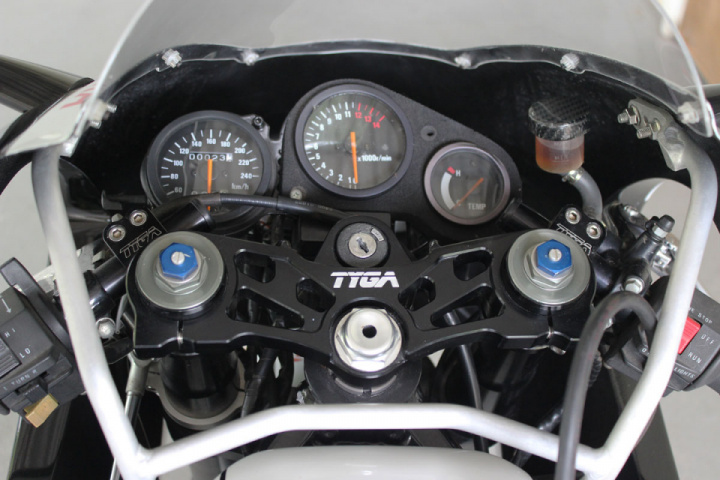
So, the performance? We’ve not put it on the dyno, but seat of the pants would say HP somewhere in the high 60’s. The power curve is practically flawless from idle up to 12,000rpm with very healthy midrange, lofting the front wheel easily in the first couple of cogs. A pleasure to ride. Certainly not the frantic tap dance that you’d expect from an early 90’s 250 replica.
Original Source [jap4performance]
#Suzuki #Custom #Bike #Moto #RGV250
 The Quadfather 12 Jan 2021let me play with it!0Reply
The Quadfather 12 Jan 2021let me play with it!0Reply




